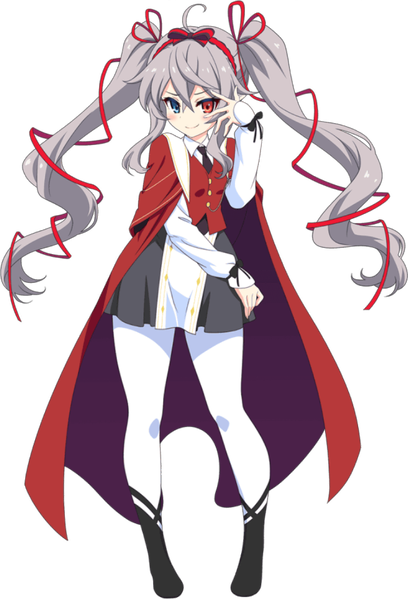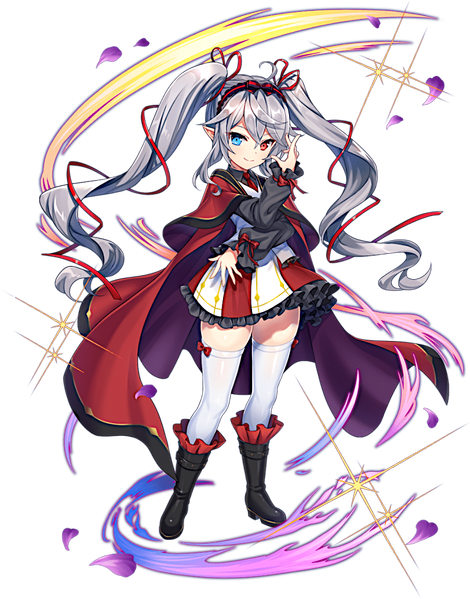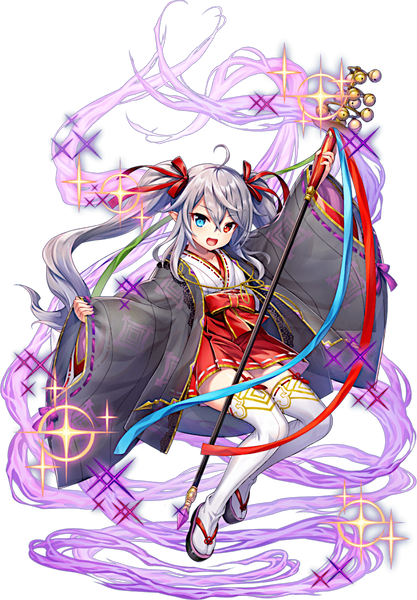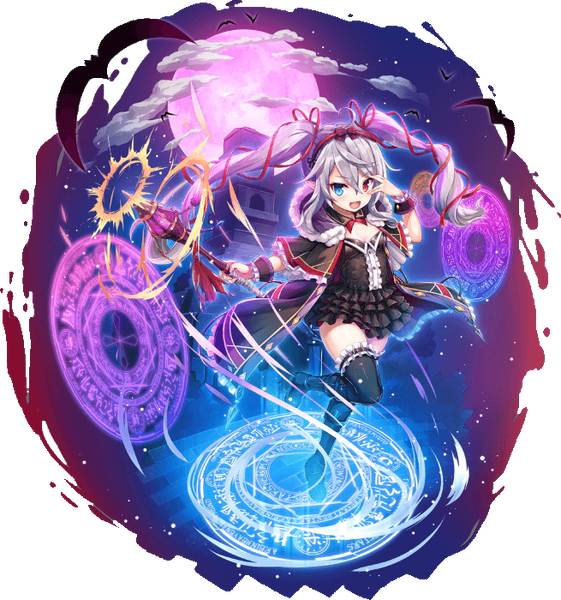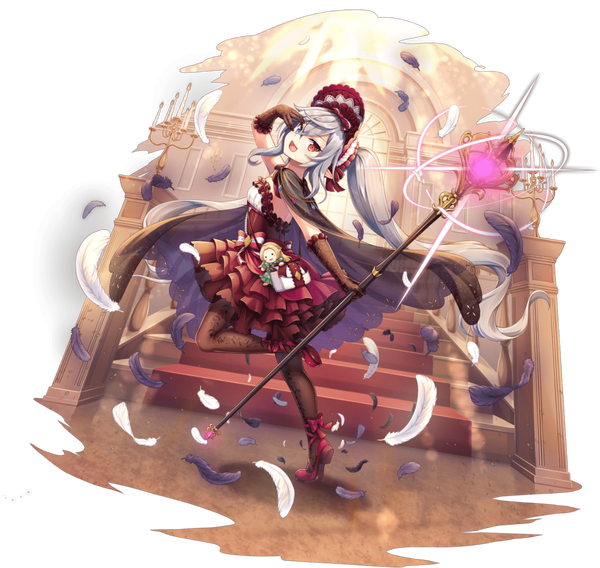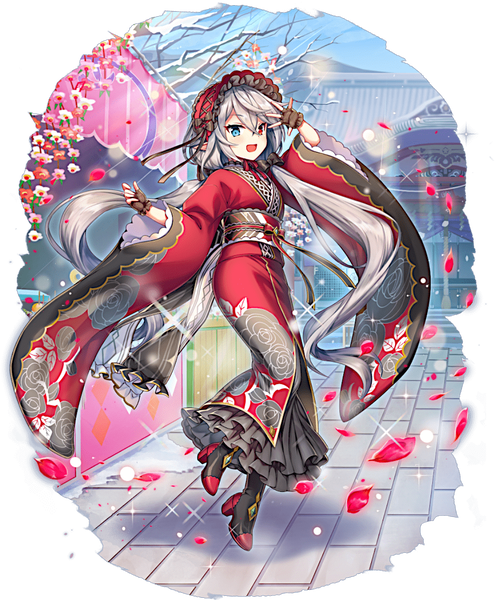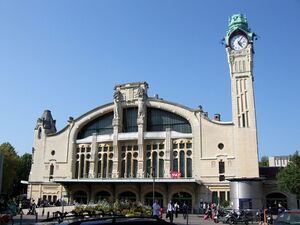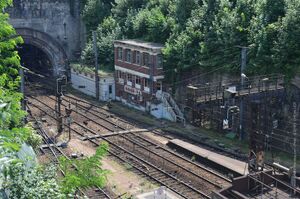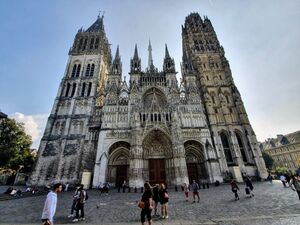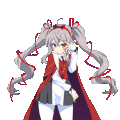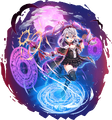Rouen
| Rouen | |||||
|---|---|---|---|---|---|
| Japanese Name | ルーアン | ||||
| Weapon | |||||
| Race | Elf | ||||
| Nationality | |||||
| Birthday | July 4 | ||||
| Constellation | Cancer | ||||
| Talents | Magic, Studying | ||||
| Likes | Everything occult, Temples and ruins | ||||
| Dislikes | Being forced to be 'normal' | ||||
| Strengths | Cheerful regardless of any situation | ||||
| Weaknesses | Selfish whenever she has grandiose delusions | ||||
| Hobbies | Visiting Holy spots, Reading | ||||
I'm Rouen. Entrusted by the Holy Angel Saint-Sever. There are tons of Sacred Holy spots in the forests of Verforet. Would you like to step into the realm of the Holy Angels too?
Layers
| Icon | Title | Release Date | Where to Obtain |
|---|---|---|---|
| [Occult-Loving Girl] Rouen | 2021 August 30 (EN) | Premium Gacha | |
| [Holy Gift] Rouen | 2021 December 16 (EN) | [Starry Forest Ornament] Limited Gacha | |
| [Marriage of Light and Dark] Rouen | 2022 August 31 | [Welcome to Gunma Land] Pick Up Gacha, Premium Gacha | |
| [Shrine Maiden Who Embraces Holy Power] Rouen | 2024 January 1 | [Chinkotatsu in Ryuutatsu City] Event Reward | |
| [Holy Angel's Blessing] Rouen | 2021 August 30 (EN) | Layer Summon (Gears purchased from Battle Exhibition Shop), Premium Gacha | |
| [Messenger Clad in Holy Garments] Rouen | 2021 September 30 | 1st Anniversary Limited Gacha 3 | |
| [Sacred Holy Hatsumode] Rouen | 2024 January 1 | [Chinkotatsu in Ryuutatsu City] Limited Gacha |
Obtained Skills
Trivia
- Rouen's birthday is the opening date of Rouen-Rive-Droite in 1847.
- Rouen's full name is Rouen-Rive-Droite. This is directly pointing to her counterpart, Rouen-Rive-Droite station in real life.
- Holy Angel Saint-Sever is the goddess that Rouen worships. Saint-Sever is a reference to Rouen Saint-Sever station, the predecessor to Rouen-Rive-Droite station. Rouen Saint-Sever station was destroyed in 1944 by the Allied bombardments of the Second World War.
- Amiens is Rouen's archaeology research partner. The partners are subordinates of Vivienne as part of the Verforet Gendarmerie.
- Rouen's spelunker design and liking of exploring ruins is shared with Amiens, as both regions of France has a combination of ancient and modern (Second World War) ruins. Her primary theme is based off the Rouen Cathedral.
- Rouen's staff design is inspired from the iron spire of Rouen Cathedral. The architect Jean-Antoine Alavoine proposed to replace it with a new spire made of cast iron. The idea of an iron spire was highly controversial; the novelist Gustave Flaubert denounced it as "the dream of a metal-worker in a delirium".
- Rouen's admiration towards Orleans could be a reference to the Keep of Rouen Castle, now known as the Tour Jeanne d'Arc, where Joan of Arc was imprisoned and put to trial.
- Rouen's red eye is a reference to the iconic red signal box of Rouen-Rive-Droite station.
- The ruins in the background of [Holy Angel's Blessing] is the demolished Rouen Saint-Sever station.
Counterpart
Rouen-Rive-Droite is a large railway station serving the city of Rouen, Normandy, France. The station is on Rue Verte in the north of the city. Services are mainly intercity but many services are local. There are also TGV from Le Havre to Marseille-Saint-Charles.
The station opened its doors in 1847 when the Rouen–Le Havre section of the Paris–Le Havre railway opened to service. The line previously had its terminus at Rouen Rive-Gauche. With the increase in traffic, the construction of the new station on the North bank of the River Seine started. The station building was designed in Art Nouveau style by architect Adolphe Dervaux, with commissioned sculpture by Camille Lefèvre. The station was inaugurated on 4 July 1928 by French President Gaston Doumergue. At first named Rue Verte, the station then changed name to Rive-Droite. In 1994 an interchange was built to serve Rouen métro.
The station is listed as a historical monument by decree of the French government on January 15, 1975. Between 1982 and 1987, architect Louis Arretche's firm directed the development of a car park above the tracks, which required a restructuring of pedestrian traffic and access to the platforms; the original galleries and walkways were modified. Wikipedia
Rouen Saint-Sever was a large railway station serving the city of Rouen, Normandy, northern France. The station was situated along the quais of the River Seine to the east of city's centre. Saint-Sever is currently used as a warehouse by Service national des messageries.
The station opened on May 3, 1843, when the line from Paris-Saint-Lazare to Rouen opened to service. The station was destroyed in 1944 by the Allied bombardments and was not reopened to passenger traffic after repairs. A short-lived SNCF staff station called Rouen Préfecture occupied the site but closed in the 1990s. Wikipedia
Rouen Cathedral (Cathédrale primatiale Notre-Dame de l'Assomption de Rouen) is a Roman Catholic church in Rouen, Normandy, France. It is the see of the Archbishop of Rouen, Primate of Normandy. It is famous for its three towers, each in a different style. The cathedral, built and rebuilt over a period of more than eight hundred years, has features from Early Gothic to late Flamboyant and Renaissance architecture. It also has a place in art history as the subject of a series of impressionist paintings by Claude Monet.
At the beginning of World War II in 1939, remembering the damage caused to French cathedrals in World War I, the Cathedral authorities protected the sculpture of the cathedral with sandbags and removed the old stained glass and transported it to sites far from the city. Nonetheless, in the weeks before D-Day in Normandy, the cathedral was hit twice by Allied bombs. In April 1944, seven bombs dropped by the British Royal Air Force hit the building, narrowly missing a key pillar of the lantern tower, and damaging much of the south aisle and destroying two windows. In June 1944, a few days before D-Day, bombs dropped by the U.S. Army Air Force set fire to the Saint-Romain tower. The bells melted, leaving molten remains on the floor.
Following World War II, a major restoration effort began to repair war damage by the Service of Historic Monuments, concluding in 1956. Then a new campaign began to consolidate the structure and to restore the statuary of the west front, including putting back four statues that had been moved elsewhere. In 2016, the project was finished and the scaffolding which had covered much of the cathedral for a half-century was finally removed. Wikipedia
Map
Gallery
- Pages using Tabber parser tag
- Pages using DynamicPageList3 parser tag
- Weapon Staff
- Elf
- Verforet
- Cancer
- Element Blow
- Element Fire
- Element Light
- Element Pierce
- Train Knights
- France

